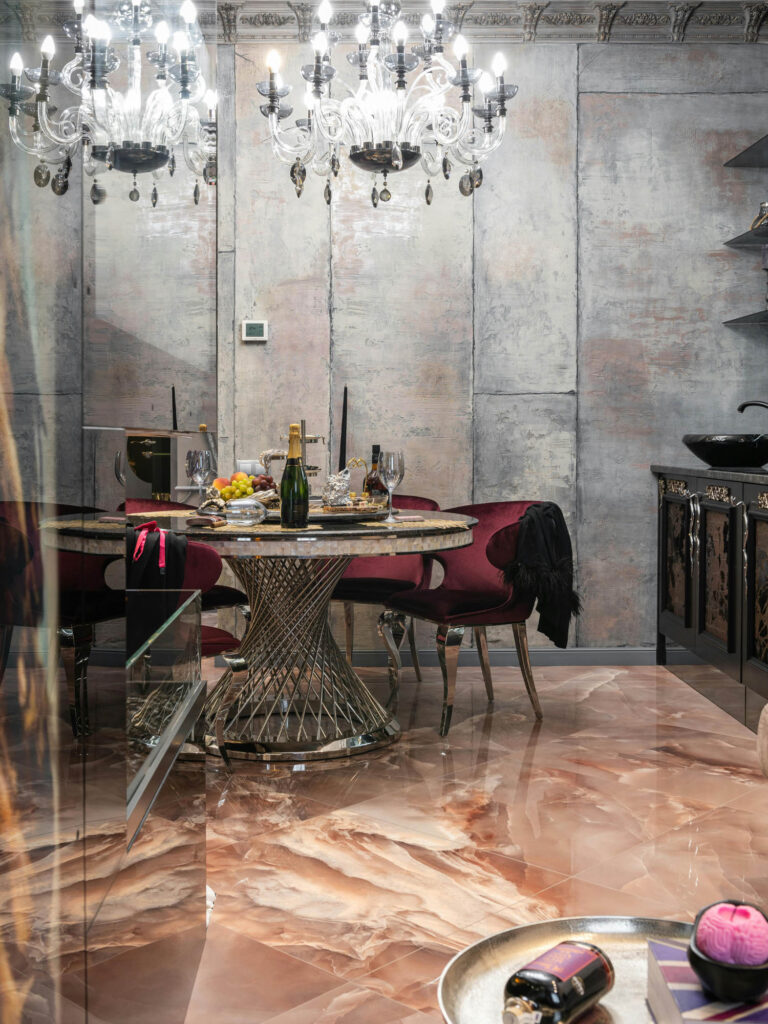In the realm of interior design, rules often shape our decisions, guiding everything from color schemes to furniture placement. Yet, there are moments when breaking these conventions can yield truly inspired and unique spaces.
At its core, interior design is about self-expression and creating spaces that reflect individual personality and lifestyle. Breaking free from constraints allows for exploration and innovation, pushing boundaries to uncover new possibilities. Embracing personal style fully is a compelling reason to defy design rules. Trends may dictate what’s popular, but true authenticity lies in curating spaces that resonate with individual tastes. Mixing patterns, textures, and styles can result in homes that feel genuinely unique.
While design rules often aim for balance and harmony, it’s the unexpected elements that make the most impact. Breaking traditional conventions can draw attention to focal points and inject personality into a space. Bold color choices, unconventional arrangements, or unexpected accessories can transform a room from ordinary to extraordinary.
Defying design conventions fosters a culture of creativity and innovation. Experimentation with unconventional ideas encourages thinking outside the box, leading to groundbreaking design concepts. However, breaking rules should be done purposefully, with an understanding of underlying principles. Thoughtfully defying conventions can result in spaces that are not only visually striking but also functional and harmonious.
In the world of interior design, rules are meant to be broken. Embracing the freedom to defy conventions opens doors to creativity and innovation. Whether expressing personal style, making impactful statements, or fostering a culture of creativity, breaking design rules can lead to truly inspired spaces. It’s through challenging the status quo that we often find true brilliance.
Now, let’s examine which design rules you should be breaking.

Mixing Patterns with Abandon
Traditionally, interior designers have advised against mixing patterns excessively, fearing it could create visual chaos. However, embracing an eclectic mix of patterns can inject personality and vibrancy into a space. Experiment with combining different scales, textures, and styles to create a visually dynamic environment. From geometric prints to floral motifs, don’t be afraid to mix and match for a truly unique look.
Discover the art of breaking design rules in our latest blog post, where we explore when and why you should defy conventions to unleash your creative brilliance. Keep reading to revolutionize your approach to design and embrace innovation like never before.
Oversized Furniture in Small Spaces
A common rule dictates that small spaces should be furnished with small-scale furniture to avoid overwhelming the room. However, strategically incorporating oversized pieces can add drama and sophistication to compact areas. Opt for a statement sofa or a substantial coffee table to anchor the space, creating a focal point that draws the eye and adds visual interest.
Playing with Scale and Proportion
Conventional wisdom dictates that furniture and decor should be proportional to the size of the room. While maintaining balance is essential, breaking free from strict adherence to scale can lead to unexpected and compelling design compositions. Experiment with oversized art in a small room or introduce petite accent pieces in a grand space to create contrast and intrigue.
Embracing Dark Colors in Small Rooms
There’s a longstanding belief that dark colors make small rooms feel even more cramped and claustrophobic. However, when used thoughtfully, dark hues can add depth and drama to compact spaces. Consider painting walls in rich, moody tones or incorporating dark accent pieces to create a cozy and intimate atmosphere. Pairing dark colors with ample lighting and reflective surfaces can help prevent the space from feeling closed-in.
Breaking Symmetry for Visual Interest
Symmetry has long been hailed as a fundamental principle of design, providing a sense of balance and order. However, deliberately breaking symmetry can infuse a room with energy and movement. Experiment with asymmetrical furniture arrangements or mix and match decor elements to create a dynamic and visually stimulating environment. Embracing asymmetry allows for a more organic and eclectic aesthetic that feels inviting and engaging.

Overlooking Ceiling Design
Conventionally, ceilings are often overlooked as merely a blank canvas or relegated to a coat of white paint. However, defying this norm by paying attention to ceiling design can transform a space from ordinary to extraordinary. Consider adding architectural details such as beams, coffered ceilings, or intricate molding to create visual interest and add dimension. Experimenting with bold paint colors or wallpaper on the ceiling can also elevate the overall aesthetic, drawing the eye upward and adding depth to the room.
Sticking to One Design Style
Another common rule in interior design is the notion that spaces should adhere strictly to one design style for cohesiveness. While cohesion is essential, embracing a mix of design styles can result in eclectic and visually dynamic interiors.
Combining elements from different eras and aesthetics adds layers of interest and tells a unique story about the homeowner’s tastes and personality. Mix mid-century modern furniture with rustic accents or juxtapose contemporary pieces with vintage finds for a curated yet eclectic look that defies categorization.
In conclusion, in the quest for exceptional interior design, it’s crucial to recognize when breaking traditional design rules can lead to truly remarkable spaces. From mixing patterns with abandon to embracing dark colors in small rooms, our exploration has revealed the transformative power of defying conventions.
By pushing the boundaries of design, whether through oversized furniture in small spaces or asymmetrical arrangements, we unlock new levels of creativity and innovation. Remember, the art of design lies in embracing the freedom to challenge the status quo and daring to think outside the box.
So, as you embark on your design journey, don’t hesitate to break the rules and unleash your creative brilliance.




